In pictures: The bacteria living on your hands right now
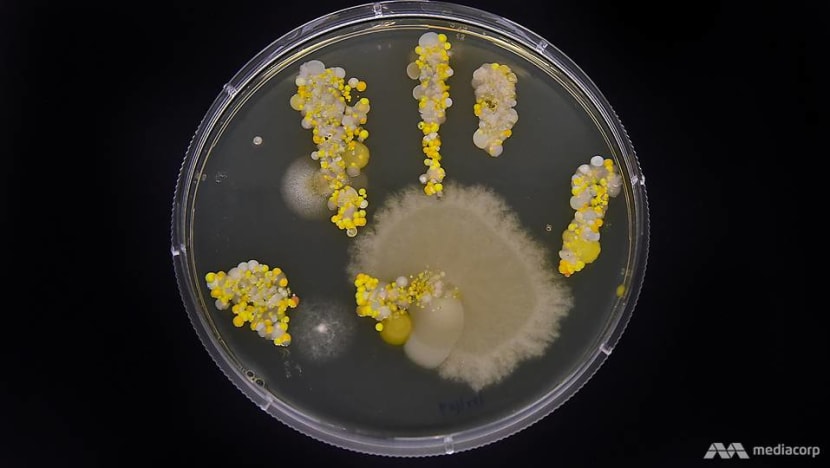
Bacteria from a supermarket trolley. (Photo: Gaya Chandramohan)
SINGAPORE: Consider for a moment what you've touched today. After all, our hands do all sorts of things for us – they open doors, handle money at the wet market, hold on to poles on public buses and trains, all the time while grasping our phones. They often also act as the barrier between our coughs and the rest of the world.
Up to 80 per cent of all infections are transmitted by hands, according to estimates by the US Centers for Disease Control and Prevention.
In an effort to visualise the amount and variety of bacteria we regularly come in contact with, we literally got our hands dirty - handling various objects we regularly come in contact with, and then making prints of our hands on agar plates.
To eliminate cross-contamination, we also made sure to sanitise our hands before touching each surface.

Dr Chris Sham, Assistant Professor of Microbiology at the National University of Singapore, supervised our experiment and incubated the prints for three days at 37 degrees Celsius to provide optimum conditions for the microbes to reproduce.
This is what we found:
TEST AND CONTROL PLATES
First, we took a print of our hand as it was, several hours after it last saw soap or water.
Three days later, the agar plate revealed many thriving colonies of the bacteria that we had inadvertently picked up in the course of the day.
In the meantime, we washed our hands thoroughly and made another print - one that turned up drastically less bacteria. This was our control plate.
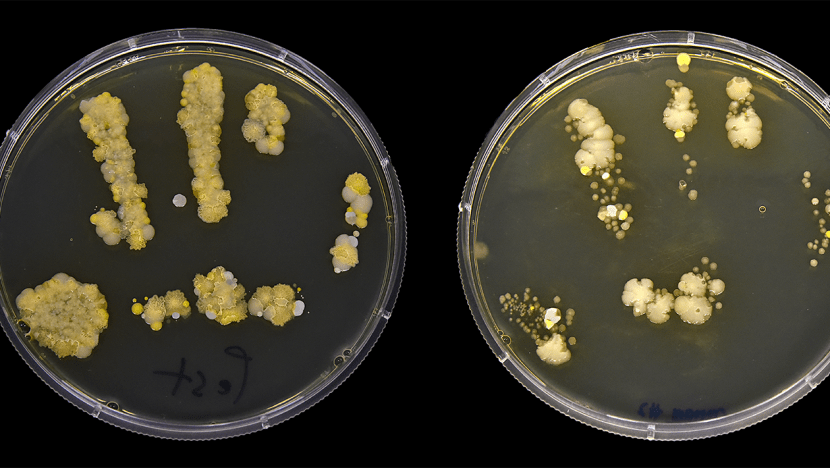
More sophisticated techniques are required to identify bacteria, but Dr Sham appraised all the bacteria we picked up with a critical eye and an educated guess.
He explained that two kinds of bacteria can be found on human hands – resident bacteria and transient bacteria.
Transient bacteria is what we inevitably pick up in the course of touching or interacting with people and things around us.
Resident bacteria is always present on our skin and is usually harmless, often working to keep other bacteria at bay.
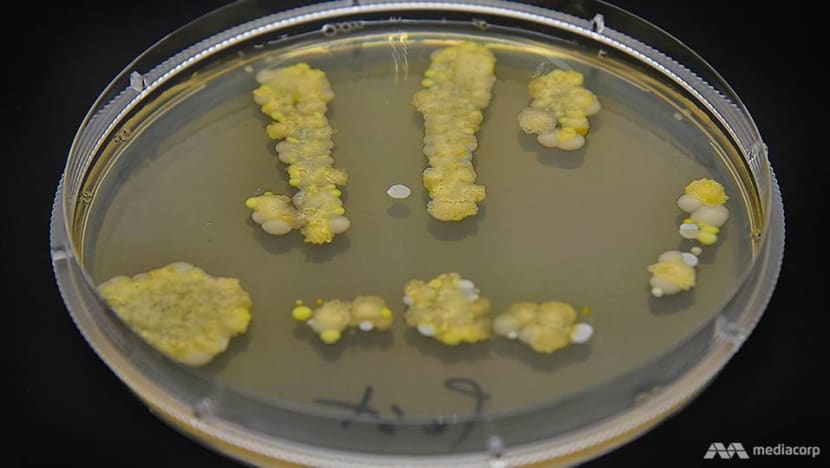
Dr Sham noted that the bacteria on the hand that hadn't been washed was noticeably different from that on the control plate.
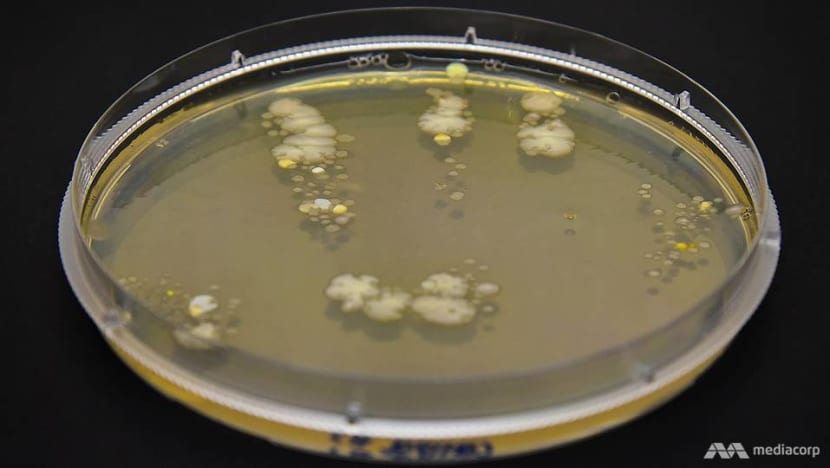
“This shows how soap and water definitely removes more bacteria on your skin’s surface,” he said.
MOBILE PHONE
Some of us are inclined to take our phones with us everywhere - even to the toilet - and its surface is often teeming with all kinds of micro-organisms we pick up.
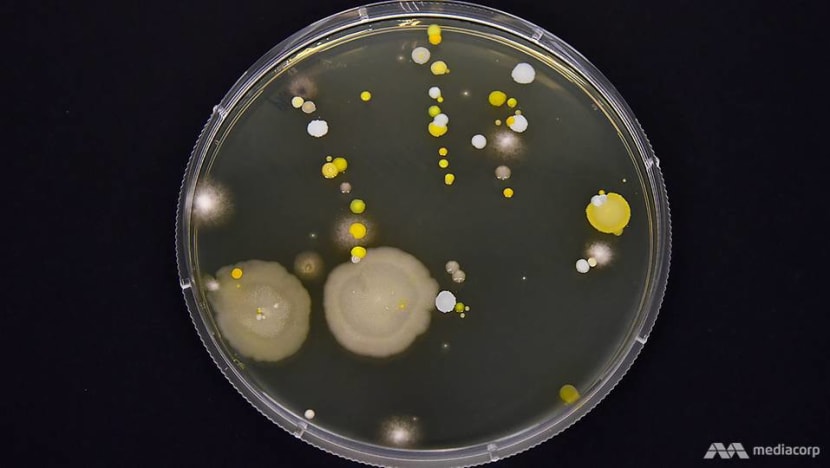
Studying the print we made after handling a mobile phone, Dr Sham said: "The golden colonies seen here are likely staphylococcus aureus – an opportunistic pathogen that can cause serious infection."
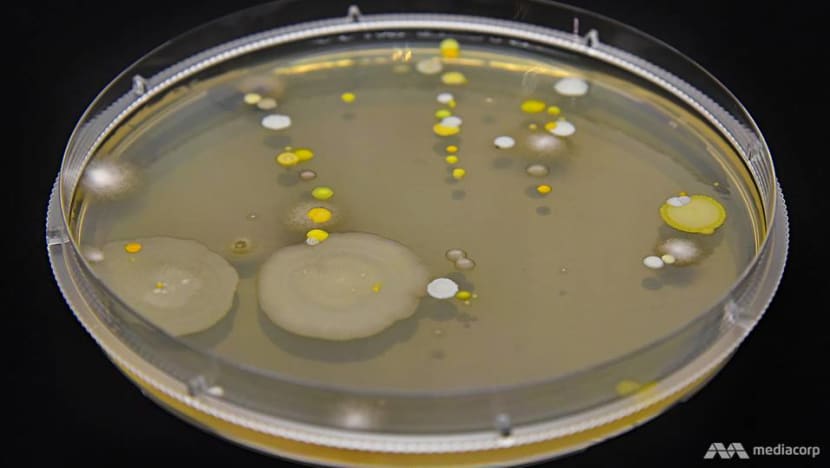
“You can also see that there was some mould on the hand as well. It was probably picked up from contact with soil,” Dr Sham said.
SUPERMARKET TROLLEY HANDLE
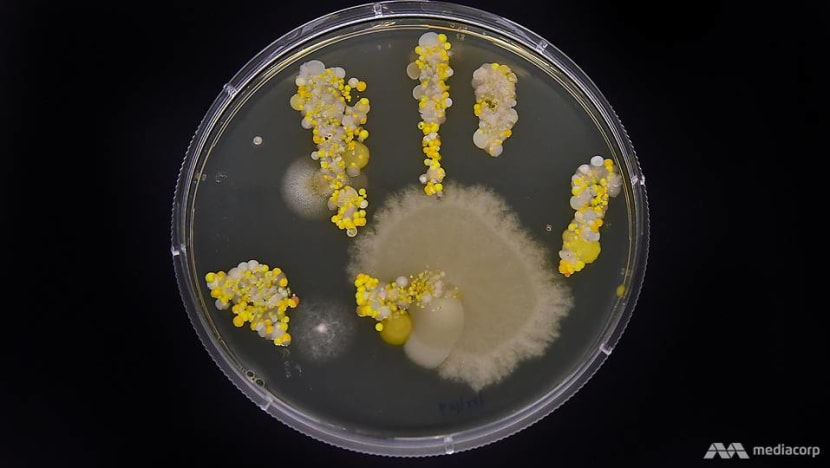
The handprint we made after pushing a supermarket trolley while grocery-shopping shed light on the many kinds of bacteria, including staphylococcus aureus, on the trolley handle.
Dr Sham also drew attention to the motile bacteria present – microbes that are able to move around the agar plate to gain more resources and grow into bigger colonies.
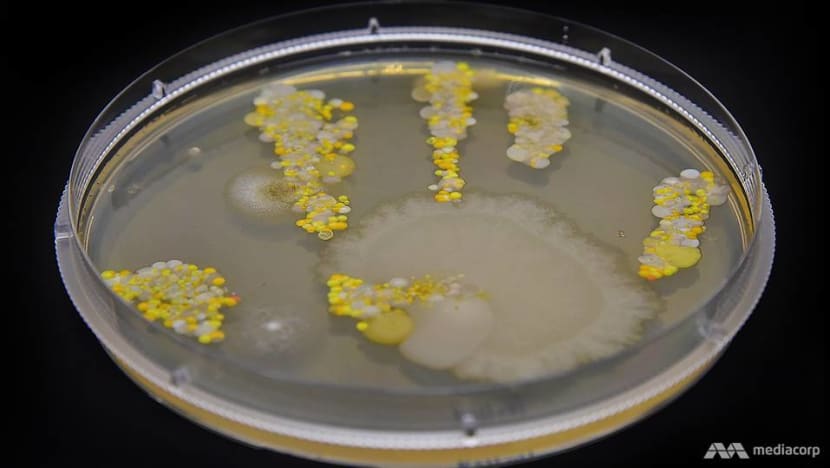
Human hands are "very good carriers" in disseminating bacteria, he said, citing how products like packaged poultry, seafood and fruit pass through the hands of many customers as they browse and wheel their trolleys around the supermarket.
"If I use the trolley and (then) you touch it next and I haven’t washed my hands previously, I can also spread my bacteria to you in that way.
It becomes like an indirect handshake.
"In that sense, we need to be more careful when touching public surfaces."
COFFEE SHOP MENU
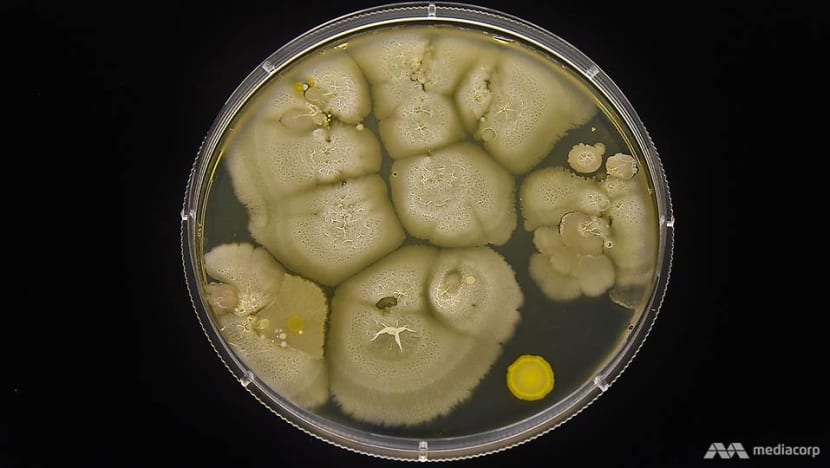
The handprint taken after flipping through a menu at a coffee shop showed a type of bacteria that moved very quickly on the nutrient-rich agar plate - so quickly as to colonise it entirely.
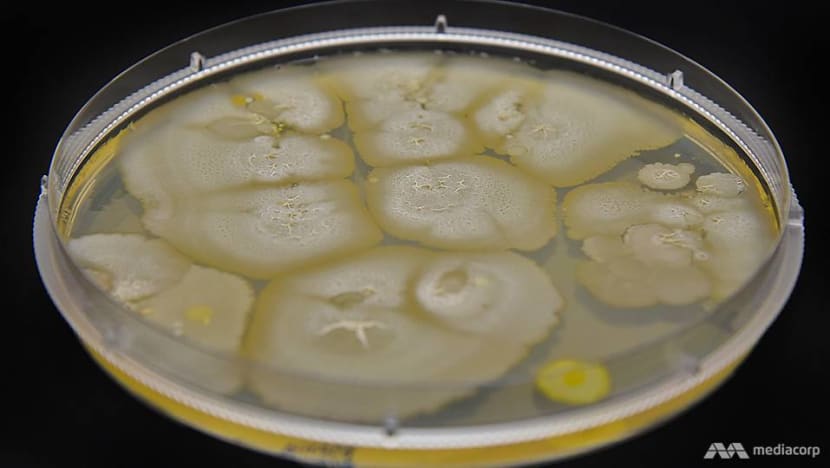
The menus pass through the hands of many people on any given day, and the experiment only highlighted the need to wash or sanitise our hands after handling items like these.
DOG SALIVA
How about our pets then? We spent some time outdoors playing fetch with our slobbery, enthusiastic dog.
Then we took a handprint.
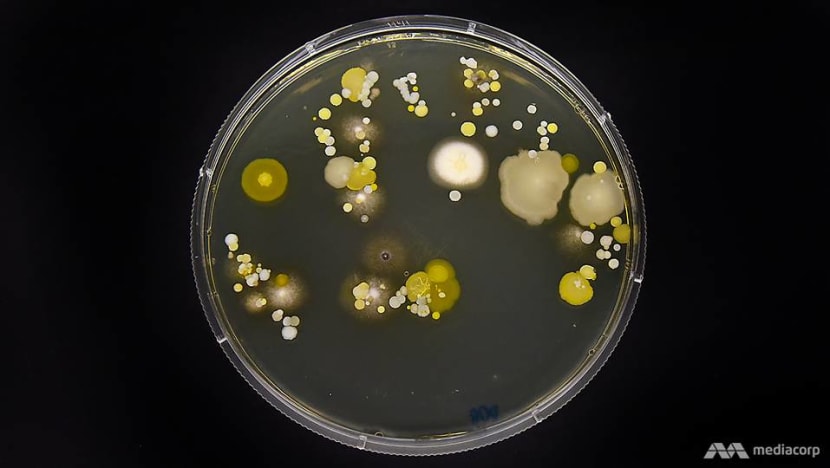
Toys that are taken outdoors and slobbery from being held in the dog’s mouth can provide the perfect conditions needed for bacteria to flourish.
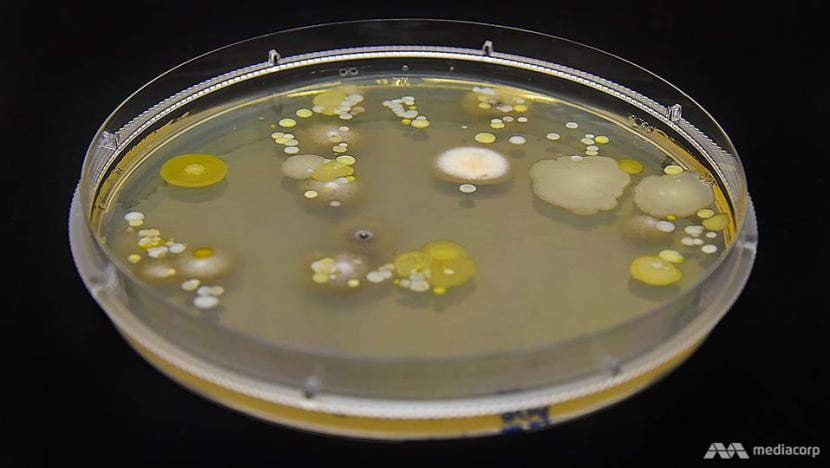
"After (playing with) the dog, you can see a lot more environmental bacteria colonising the surface," said Dr Sham, comparing the print with the control plate.
"The number of bacteria species has also increased by a lot."
OFFICE PANTRY SPONGE
The experiment confirmed our worst suspicions about the shared kitchen sponges commonly found in office pantries.
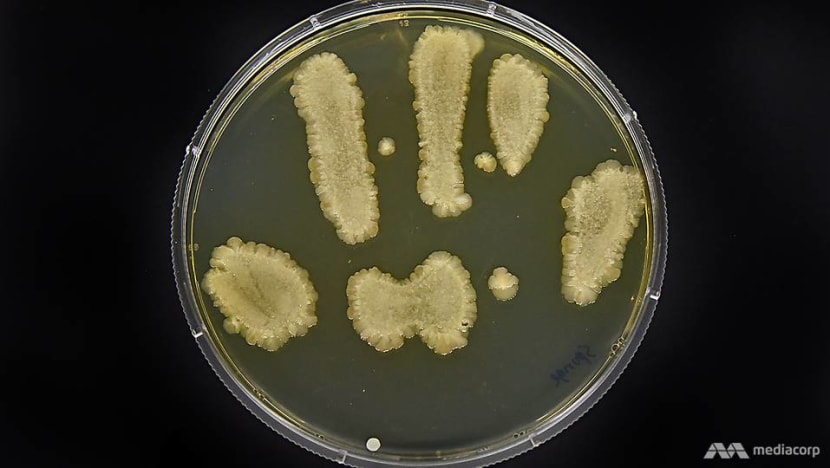
“If you look closely at this print, you will find that there are no individual colonies present but instead, due to the large amount of bacteria present on the sponge, the individual colonies have actually fused together to become what we call confluent growth," said Dr Sham.
"So that suggests that your sponge is not as clean as you expected.”
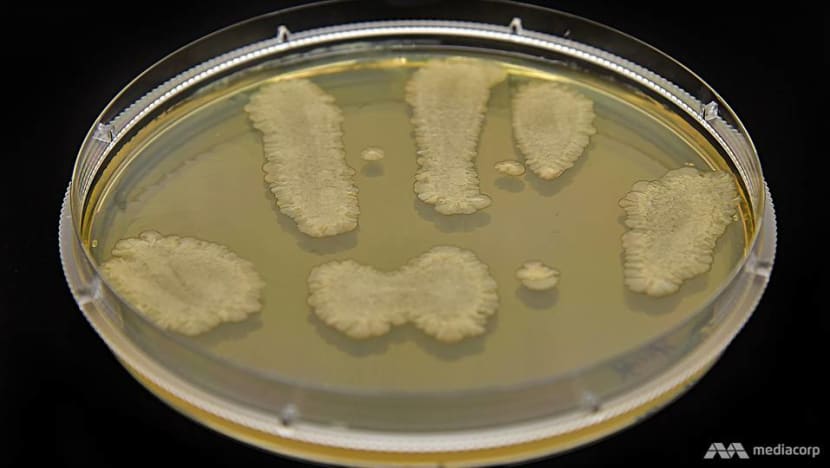
"Kitchen sponges – because they are damp, bacteria is able to multiply very quickly," he said.
"After daily use, if you don’t disinfect your kitchen sponge, you actually end up spreading the bacteria from one item to another instead of cleaning it."
Through a microscope, we could see tiny rod-shaped bacteria swimming around the agar plate, racing across the screen.
It's impossible to avoid bacteria altogether, but Dr Sham suggested that we can at least control the kind of bacteria we come into contact with.
"We know where we can find pathogenic bacteria – like the toilet seat. This faecal-mouth pathway is very common to food-borne diseases," he said.
I have personally seen people around who just rinse their hand for one second after using the bathroom.
Dr Natasha Bagdasarian, a consultant with the Division of Infectious Diseases at National University Hospital cited a study that found enterococci, a type of faecal bacteria, on the hands of people after they had touched handrails, door handles and seats in public areas, such as museums and public transportation.
Viruses can also be spread through contaminated hands and surfaces, she noted. These include norovirus, a common cause of stomach flu; rotavirus, another common cause of infectious diarrhoea; as well as respiratory viruses like influenza and adenovirus.
"Now that you know this, you should wash your hands really well and even apply skin disinfectant," Dr Sham said. "This will effectively eliminate the bacteria on your hands such that when you grab food, you don't take unexpected guests into your body - this is very important."
But he added that one cannot make oneself completely sterile. "You can wash your hands 500 times but because the environment is filled with bacteria, you are bound to pick it up somewhere."
Besides, he said, not all bacteria is bad for humans. "For example, some of your gut microbes produce vitamins that you cannot produce. Some of them also help you to maintain your immune system."














